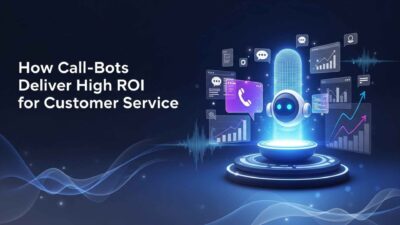Introduction
TL;DR Developers today leverage AI platforms for app prototyping to accelerate product development cycles and validate concepts rapidly. Traditional prototyping methods require extensive coding, design work, and technical resources before stakeholders see functional demonstrations. Modern artificial intelligence tools transform vague ideas into interactive prototypes within hours rather than weeks.
Table of Contents
App prototyping represents the critical phase where concepts become tangible experiences that teams can test and refine. Speed matters tremendously during early development stages when market conditions shift rapidly and competitor threats emerge constantly. AI-powered platforms eliminate repetitive coding tasks and automate design decisions that previously consumed valuable developer time.
This comprehensive guide explores the leading AI platforms for app prototyping that professional developers rely on for efficient product development. You will discover platform capabilities, practical applications, selection criteria, and implementation strategies for choosing tools that match your specific prototyping needs.
Understanding AI-Powered App Prototyping
AI-powered app prototyping combines machine learning algorithms with visual design tools to generate functional application mockups automatically. These platforms analyze user inputs, design preferences, and feature requirements to produce working prototypes without extensive manual coding. Modern tools understand design patterns, user experience principles, and technical constraints that inform intelligent prototype generation.
How AI Transforms Traditional Prototyping
Automated Code Generation AI platforms for app prototyping convert visual designs and functional specifications into production-ready code automatically. Developers describe desired features using natural language or visual interfaces rather than writing every line manually. Code generation capabilities dramatically reduce time spent on boilerplate implementation and repetitive patterns.
Intelligent Design Suggestions Machine learning algorithms analyze successful applications to recommend optimal layouts, color schemes, and interaction patterns. Design intelligence helps developers without strong visual design skills create professional-looking prototypes. Automated suggestions accelerate decision-making and prevent common usability mistakes.
Rapid Iteration Capabilities AI tools enable instant modifications and regeneration of prototypes based on feedback and changing requirements. Developers test multiple design variations quickly without rebuilding entire interfaces manually. Iteration speed determines how thoroughly teams explore solution spaces before committing resources.
User Experience Optimization Advanced platforms analyze user interaction patterns to optimize interface flows and element placement automatically. UX intelligence ensures prototypes demonstrate best practices that improve user satisfaction. Optimization features prevent fundamental usability issues early in development.
Key Benefits for Development Teams
Time Efficiency Gains Prototyping tasks that traditionally require days or weeks complete within hours using AI automation. Time savings allow developers to focus on complex business logic rather than interface construction. Efficiency improvements directly impact project timelines and resource costs.
Lower Technical Barriers Non-technical stakeholders participate in prototyping processes using intuitive visual interfaces. Reduced barriers improve collaboration and enable broader team participation. Accessibility features democratize product development across organizations.
Cost Reduction Impact Automated prototyping reduces labor costs and enables smaller teams to accomplish more output. Financial efficiency makes prototyping viable for projects with limited budgets. Cost advantages justify platform investments through labor savings.
Quality Consistency AI-generated prototypes maintain consistent design standards and coding practices across entire applications. Consistency prevents the quality variations common in manual development efforts. Standardization improves maintainability and professional polish.
Leading AI Platforms for App Prototyping
No-Code and Low-Code Solutions
Bubble Bubble represents a comprehensive visual programming platform enabling full-stack application development without traditional coding. The platform provides drag-and-drop interface design paired with workflow logic creation through visual connections. Bubble’s database management and API integration capabilities support complex application requirements beyond simple prototypes.
Developers appreciate Bubble’s extensive plugin ecosystem that extends platform functionality for specialized needs. The responsive design system ensures prototypes work across desktop and mobile devices automatically. Bubble suits teams wanting to transform prototypes into production applications without rebuilding.
Webflow Webflow focuses on design-first development with visual CSS and responsive layout controls. The platform generates clean HTML, CSS, and JavaScript code that professional developers can export and customize. Webflow excels at creating visually sophisticated prototypes with custom animations and interactions.
Design flexibility allows pixel-perfect implementation matching specific brand guidelines and creative visions. CMS integration enables content-driven prototypes demonstrating dynamic data presentation. Webflow bridges the gap between design tools and functional web applications effectively.
Adalo Adalo specializes in mobile app prototyping with native iOS and Android application generation capabilities. The visual builder includes pre-built components for common mobile patterns like lists, forms, and navigation. Database integration and user authentication features enable realistic prototypes with working backend functionality.
Cross-platform development from single projects reduces prototype complexity for multi-device applications. Publishing directly to app stores from prototypes accelerates path to market validation. Adalo serves teams prioritizing mobile-first application development.
AI-Enhanced Design Tools
Uizard Uizard employs computer vision to convert hand-drawn sketches into digital prototypes automatically. The platform’s AI recognizes common UI elements and translates rough drawings into polished interfaces. Sketch-to-prototype conversion dramatically accelerates early concept visualization stages.
Design automation suggests improvements and generates variations based on initial inputs. Collaboration features enable real-time team editing and feedback collection. Uizard suits rapid ideation phases where speed matters more than pixel-perfect precision.
Galileo AI Galileo AI generates complete interface designs from text descriptions using advanced language models. Developers describe desired screens using natural language and receive multiple design options instantly. Text-to-design capabilities remove technical barriers from early prototyping stages.
The platform learns from design feedback to improve future suggestions matching specific preferences. Component libraries and design systems ensure generated interfaces maintain consistency. Galileo accelerates concept exploration allowing teams to evaluate numerous approaches quickly.
Diagram Diagram focuses on design-to-code conversion with AI-enhanced translation from Figma designs to production code. The platform generates React, Vue, and other framework code directly from design files. Design-to-code automation bridges the gap between designers and developers efficiently.
Responsive code generation ensures prototypes adapt to different screen sizes automatically. Component extraction creates reusable code modules from design elements. Diagram serves teams with established design processes wanting faster implementation.
Full-Featured Development Platforms
OutSystems OutSystems provides enterprise-grade low-code development with AI-assisted application generation and optimization. The platform supports complex business logic, database relationships, and integration requirements. Enterprise features include security, scalability, and governance controls necessary for organizational deployment.
Visual modeling tools abstract technical complexity while maintaining professional code quality standards. One-click deployment manages infrastructure provisioning and application hosting automatically. OutSystems suits large organizations prototyping enterprise applications requiring robust architecture.
Mendix Mendix combines visual development with AI-powered performance optimization and quality assurance. The platform generates suggested data models based on application requirements automatically. Collaborative development features enable distributed teams to work on prototypes simultaneously.
Native mobile app generation creates iOS and Android applications from single development efforts. Extensive integration capabilities connect prototypes with existing systems and external APIs. Mendix serves organizations wanting rapid prototyping without sacrificing enterprise capabilities.
Microsoft Power Apps Power Apps integrates deeply with Microsoft ecosystem including Office 365, Dynamics, and Azure services. AI Builder adds machine learning capabilities like object detection and prediction to prototype applications. Low-code approach suits business users creating departmental applications.
Template gallery provides starting points for common business scenarios reducing prototype development time. Data connectors link to hundreds of services enabling realistic prototype functionality. Power Apps works well for Microsoft-centric organizations prototyping internal tools.
Selecting the Right Platform for Your Needs
Project Requirement Assessment
Prototype Complexity Evaluation Simple prototypes demonstrating basic flows require different capabilities than complex applications with backend logic. Feature requirements determine whether no-code tools suffice or full-featured platforms become necessary. Complexity assessment guides appropriate platform selection avoiding over-engineering or capability gaps.
Target Platform Consideration Web application prototypes require different tools than native mobile app prototypes. Cross-platform needs influence whether single-platform specialists or universal tools work better. Platform targeting significantly impacts tool selection and development approach.
Timeline and Resource Constraints Aggressive deadlines favor rapid AI platforms for app prototyping with extensive automation capabilities. Limited technical resources necessitate tools with lower learning curves and better abstraction. Constraint analysis ensures realistic platform matching for successful outcomes.
Scalability Requirements Throwaway prototypes for concept validation need different platforms than MVPs intended for production deployment. Scalability considerations affect whether investing in enterprise platforms makes sense initially. Growth planning influences platform selection beyond immediate prototyping needs.
Technical Capability Matching
Team Skill Assessment Developer expertise levels determine appropriate platform complexity and abstraction requirements. Non-technical teams need visual interfaces while experienced developers prefer code-level control. Skill matching ensures teams leverage tools effectively without excessive learning curves.
Integration Requirements External service connections and API dependencies influence platform selection significantly. Some AI platforms for app prototyping excel at integrations while others provide limited connectivity. Integration needs should drive platform evaluation for complex ecosystems.
Customization Flexibility Unique requirements beyond standard components require platforms supporting custom code injection. Flexibility needs vary dramatically between generic prototypes and specialized applications. Customization capabilities prevent hitting platform limitations during development.
Export and Migration Options Prototype-to-production paths differ across platforms affecting long-term development strategies. Code export capabilities enable migration to custom development environments when needed. Exit strategies matter for avoiding vendor lock-in situations.
Cost and Licensing Considerations
Subscription Model Analysis Platform pricing structures vary from free tiers to expensive enterprise subscriptions. Cost analysis must consider team size, project count, and feature requirements. Subscription commitment levels should match project duration and organizational usage patterns.
Usage-Based Pricing Impact Some platforms charge based on application users, API calls, or data storage consumption. Variable costs create budget uncertainty requiring careful usage estimation. Usage-based models suit prototype scenarios better than production deployments.
Total Ownership Cost Calculation Platform fees represent only partial costs requiring consideration of training, support, and migration expenses. Comprehensive cost analysis reveals true investment requirements beyond subscription prices. Total ownership perspective prevents budget surprises during implementation.
Implementation Best Practices
Getting Started Effectively
Platform Evaluation Approach Testing multiple platforms with actual project requirements reveals practical capabilities and limitations. Hands-on evaluation exposes usability issues and workflow friction points. Real-world testing beats theoretical analysis for platform selection decisions.
Learning Resource Utilization Platform documentation, tutorials, and community forums accelerate learning curves significantly. Investment in proper training prevents frustration and improves productivity. Educational resources vary dramatically in quality across platforms.
Template and Component Libraries Starting with pre-built templates accelerates initial prototype creation substantially. Component libraries provide tested building blocks reducing development from scratch. Existing resources compound over time as teams build reusable assets.
Iterative Development Process Building prototypes incrementally with frequent stakeholder feedback prevents wasted effort on wrong directions. Iterative approaches enable course correction before significant time investment. Agile prototyping methodologies suit AI platform capabilities naturally.
Optimization Strategies
Performance Consideration Prototype speed matters for user testing and stakeholder demonstrations requiring attention to performance optimization. AI-generated code may include inefficiencies requiring manual tuning for production. Performance awareness during prototyping prevents rebuilding for speed later.
Responsive Design Implementation Multi-device compatibility requires deliberate responsive design consideration during prototype creation. Testing across screen sizes reveals layout issues early in development. Responsive awareness prevents mobile-specific redesign efforts subsequently.
Data and State Management Realistic data and state handling make prototypes more valuable for testing and validation. Proper data architecture from prototyping phases eases transition to production development. State management decisions impact prototype quality significantly.
User Flow Optimization Navigation and interaction patterns require deliberate design ensuring intuitive user experiences. Flow testing identifies friction points and usability issues early. User-centered prototyping focuses on experience quality over feature quantity.
Common Challenges and Solutions
Technical Limitations
Platform Constraint Navigation Every platform includes limitations on customization, performance, or features requiring workarounds. Understanding constraints early prevents hitting blockers during critical development phases. Limitation awareness informs realistic prototype scope and approach.
Integration Complexity Management Connecting AI platforms for app prototyping with external services sometimes requires technical expertise beyond visual interfaces. API integration challenges delay prototyping timelines when underestimated. Integration planning should account for complexity and testing requirements.
Code Quality Concerns AI-generated code may lack optimization or follow patterns unsuitable for production deployment. Code review and refactoring may become necessary when transitioning to production. Quality awareness guides decisions about prototype disposal versus evolution.
Workflow and Collaboration Issues
Team Coordination Multiple team members working simultaneously on prototypes require coordination and version control. Collaboration features vary significantly across platforms affecting teamwork efficiency. Workflow planning should consider multi-user scenarios and conflict resolution.
Stakeholder Communication Translating prototype capabilities and limitations to non-technical stakeholders prevents unrealistic expectations. Clear communication about prototype purposes and fidelity prevents confusion. Stakeholder education improves feedback quality and decision-making.
Feedback Incorporation Balancing rapid iteration with thoughtful design prevents constant changes undermining prototype stability. Feedback processes should filter and prioritize input for manageable implementation. Change management maintains prototype usefulness throughout development.
Industry-Specific Applications
Startup and Entrepreneurship
MVP Development Startups use AI platforms for app prototyping to validate business concepts before significant investment. Quick MVPs enable customer testing and investor demonstrations with minimal resources. Speed-to-market advantages help startups compete against established players.
Investor Presentations Functional prototypes demonstrate concepts more effectively than mockups during funding pitches. Interactive demonstrations build investor confidence in technical feasibility. Presentation quality impacts fundraising success significantly.
Pivot Flexibility Rapid prototyping enables quick pivots when initial concepts fail market validation. Low switching costs allow experimentation with alternative approaches. Flexibility advantages suit uncertain startup environments well.
Enterprise Organizations
Internal Tool Development Enterprises prototype departmental applications addressing specific workflow inefficiencies. Custom internal tools improve productivity without expensive custom development. Low-code approaches suit decentralized development across business units.
Digital Transformation Projects Large organizations prototype new customer-facing applications before committing to full development. Validation through prototypes reduces risk in expensive transformation initiatives. Stakeholder alignment through demonstrations improves project success rates.
Innovation Labs Corporate innovation teams rapidly prototype experimental concepts exploring emerging technologies. Prototyping speed enables testing numerous ideas within innovation cycles. Experimentation focus suits AI platform capabilities perfectly.
Agency and Consulting
Client Proposals Agencies create functional prototypes demonstrating proposed solutions during sales processes. Interactive demonstrations differentiate proposals from competitors offering static mockups. Prototype quality impacts win rates and client confidence.
Design Validation Consultants use prototypes to validate design concepts with end users before development begins. User testing with functional prototypes reveals usability issues early. Validation reduces expensive redesign during implementation phases.
Rapid Client Delivery Agencies deliver working prototypes to clients faster using AI automation. Delivery speed improves client satisfaction and enables more projects. Efficiency advantages directly impact agency profitability.
Future Trends in AI Prototyping
Emerging Capabilities
Advanced AI Assistance Next-generation platforms will provide increasingly sophisticated design and code suggestions. AI assistants will understand project context and anticipate developer needs proactively. Enhanced intelligence will further reduce manual work during prototyping.
Voice and Natural Language Interfaces Developers will increasingly prototype applications through conversational interfaces describing requirements verbally. Natural language understanding eliminates visual interface manipulation for certain tasks. Voice interfaces accelerate rapid ideation and exploration phases.
Automated Testing Integration AI platforms will generate test cases and perform usability testing automatically on prototypes. Testing automation provides immediate feedback on design decisions and interactions. Quality assurance integration improves prototype reliability and completeness.
Market Evolution
Increased Specialization Platforms will increasingly specialize in specific industries or application types. Vertical-focused tools will provide domain-specific components and workflows. Specialization will improve prototype quality for particular use cases.
Democratization Continuation AI advances will continue reducing technical barriers enabling broader participation in prototyping. Non-developers will create increasingly sophisticated prototypes independently. Democratization will transform who participates in product development processes.
Integration Ecosystem Growth Platforms will expand integration capabilities connecting more services and data sources. Comprehensive ecosystems will enable more realistic prototypes with production-like functionality. Integration depth will differentiate leading platforms increasingly.
Measuring Prototyping Success
Efficiency Metrics
Time-to-Prototype Reduction Measure prototype completion time comparing AI platforms against traditional development methods. Time savings quantify automation benefits and justify platform investments. Speed improvements enable testing more concepts within fixed timeframes.
Iteration Velocity Track how quickly teams modify prototypes based on feedback and changing requirements. Iteration speed indicates platform effectiveness for agile development approaches. Velocity measurements guide continuous process improvement.
Resource Utilization Monitor developer hours spent on prototyping activities comparing platforms and approaches. Resource efficiency reveals productivity gains from automation. Utilization data informs team sizing and project planning decisions.
Quality Indicators
Stakeholder Satisfaction Collect feedback on prototype quality, completeness, and usefulness for decision-making. Satisfaction scores indicate whether prototypes meet their intended purposes. Stakeholder input guides platform selection and process refinement.
Technical Debt Assessment Evaluate code quality and architecture decisions made during rapid prototyping. Technical debt levels determine whether prototypes can evolve into production systems. Quality awareness prevents expensive rebuilding after validation.
User Testing Results Measure usability metrics and user satisfaction during prototype testing sessions. Testing outcomes validate design decisions and identify improvement areas. User-centered metrics ensure prototypes serve intended audiences effectively.
Read More: How AI Marketing Software Personalizes Campaigns Effectively
Conclusion

The landscape of AI platforms for app prototyping offers diverse options serving different development needs and team capabilities. Professional developers leverage these tools to accelerate product development, validate concepts efficiently, and reduce resource requirements substantially. Platform selection requires careful consideration of project complexity, team skills, and long-term development strategies.
No-code and low-code solutions democratize prototyping, enabling broader participation across technical skill levels. Visual interfaces and automation features remove traditional barriers, allowing faster iteration and experimentation. Accessibility improvements transform how organizations approach early-stage product development fundamentally.
Successful prototyping depends equally on tool selection and implementation methodology following best practices. Iterative approaches with frequent stakeholder feedback maximize prototype value and minimize wasted effort. Strategic platform usage combined with thoughtful processes delivers optimal results throughout development lifecycles.
AI platforms for app prototyping continue evolving rapidly with increasing sophistication and specialization. Early adoption positions development teams to leverage advancing capabilities for sustained competitive advantages. Investment in modern prototyping tools and skills represents a strategic necessity for organizations prioritizing innovation speed and efficiency.
Begin exploring leading platforms through hands-on evaluation, matching your specific project requirements today. Practical experience reveals which tools best suit your team dynamics, technical needs, and development workflows. Strategic platform selection coupled with deliberate skill development enables your organization to prototype applications faster and more effectively than ever before.





